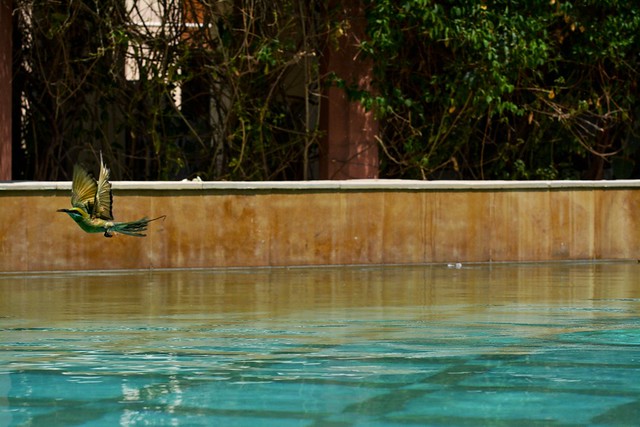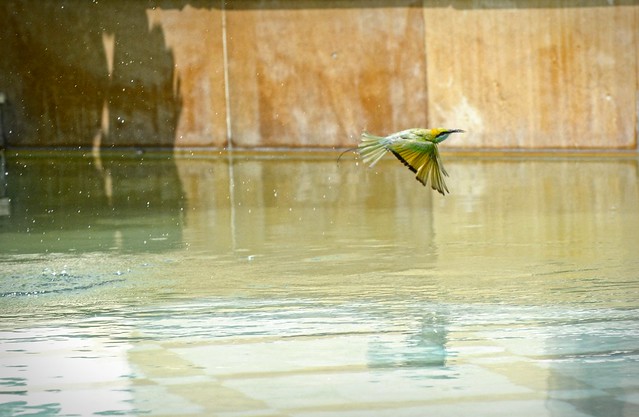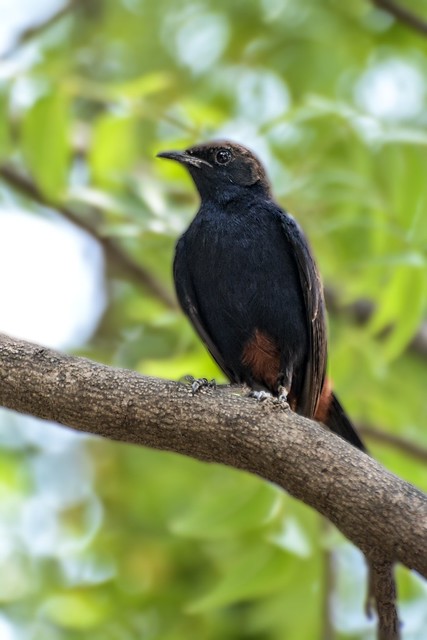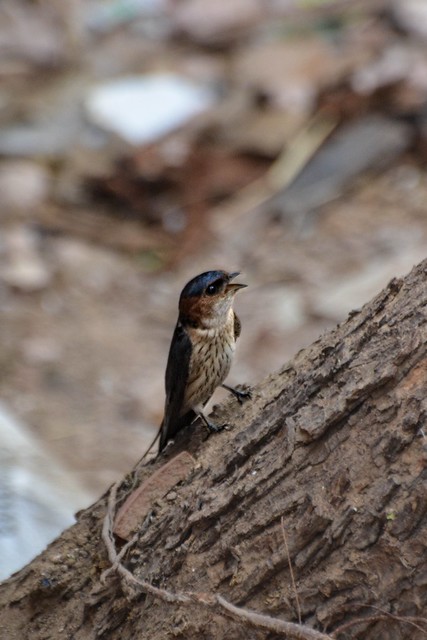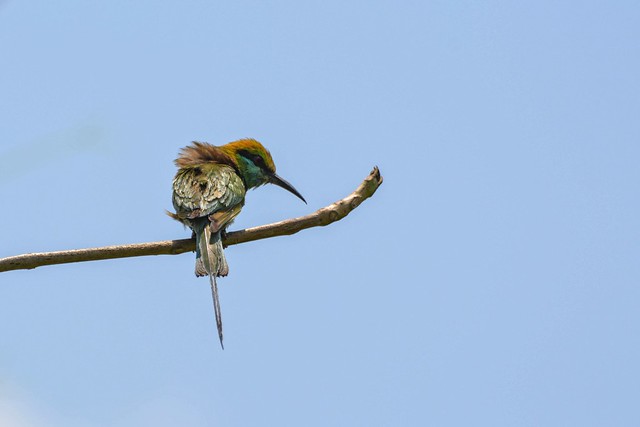 One of the highlights from our recent trip to Jaipur was the beautiful hotel pool. On our last day there, fed up with the heat, waiting for an evening flight, we arranged for a late checkout and decided to spend the morning lounging by the pool. After reading a bit, I noticed a couple of strangely colorful birds in the tree on the other side, and realized they were a group of green bee-eaters dive-bombing the pool between hunting runs to stay cool in the 104 degree weather! So of course I had to run and fetch the camera. I positioned myself behind the built-in “blind” and waited.
One of the highlights from our recent trip to Jaipur was the beautiful hotel pool. On our last day there, fed up with the heat, waiting for an evening flight, we arranged for a late checkout and decided to spend the morning lounging by the pool. After reading a bit, I noticed a couple of strangely colorful birds in the tree on the other side, and realized they were a group of green bee-eaters dive-bombing the pool between hunting runs to stay cool in the 104 degree weather! So of course I had to run and fetch the camera. I positioned myself behind the built-in “blind” and waited.
 Bee-eaters are known for their tendency to, well…eat bees! Most of them are pretty brightly-colored, and I had come across this particular variety once in Namibia, because a group of 5 or 6 would settle in every night in a neat little row on a branch in my back yard. But they don’t just eat bees – they catch them in mid-flight, and in fact will ignore bees that aren’t flying. I don’t know, maybe they enjoy the sport of it!
Bee-eaters are known for their tendency to, well…eat bees! Most of them are pretty brightly-colored, and I had come across this particular variety once in Namibia, because a group of 5 or 6 would settle in every night in a neat little row on a branch in my back yard. But they don’t just eat bees – they catch them in mid-flight, and in fact will ignore bees that aren’t flying. I don’t know, maybe they enjoy the sport of it! 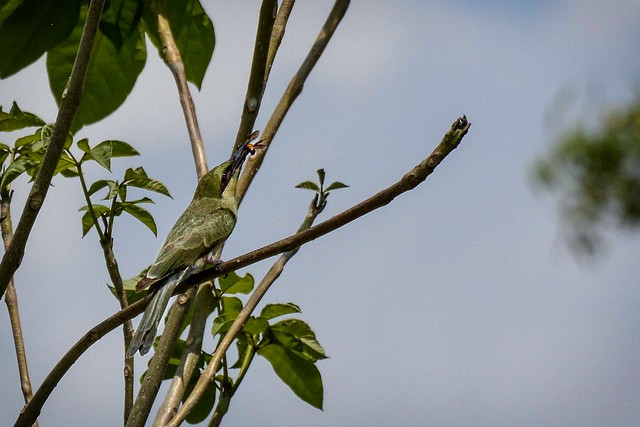
After catching a bee, they will basically whack them again and again on a branch, both to remove the stinger, and in the process, most of the venom. And then it’s snack time!
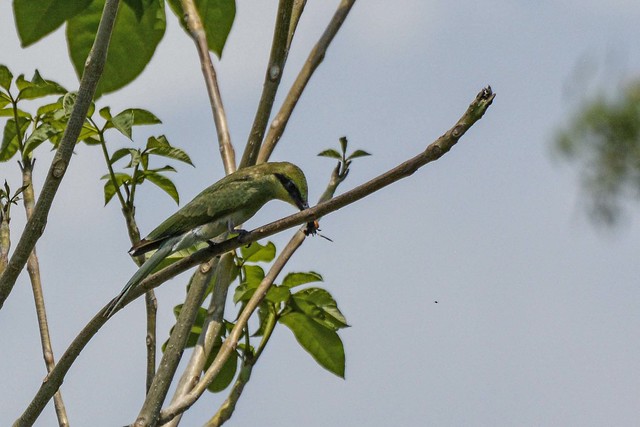 Some of the birds had an elongated center tail feather, and I thought this was a distinguishing male/female feature. But it turns out that the males and females are identical (on the outside, anyway!) and the elongated tail feather grows when the bird is mature. Hence in the sequence of photos below (a bit blurry but arranged in sequence like a comic strip) it appears that the adult has caught a bee and hands it off to the juvenile, possibly as a teaching tool.
Some of the birds had an elongated center tail feather, and I thought this was a distinguishing male/female feature. But it turns out that the males and females are identical (on the outside, anyway!) and the elongated tail feather grows when the bird is mature. Hence in the sequence of photos below (a bit blurry but arranged in sequence like a comic strip) it appears that the adult has caught a bee and hands it off to the juvenile, possibly as a teaching tool. 
But what fascinated me was the dive-bombing in the pool. They really didn’t seem to care that I was there. There were a total of four of them, and they would appear every 10-15 minutes or so and take 2-3 diving runs each before going back on the hunt.So armed with a 300mm lens, I thought I might be able to catch them mid-splash.
It turns out that this is harder than it seems. I put the camera on “sport mode,” which takes a series of photos in rapid succession so you can catch the exact moment when they come out of the water, hopefully with a lot of droplets following. But they are so fast! And if you’re zoomed in, it’s hard to find/track them. With sports mode I think the camera was taking shots at 1/2400 second or so, and they were still turning out blurry. So then I tried setting it up for single shots, but around 1/4000 second.
 This kept me entertained all afternoon. I got a few good shots too. They are all digitally enhanced a bit. This is where you see the difference between a decent consumer level lens and one of those big fancy ones – I think that ultimately there is a limit to what you can capture in a case like this if you don’t spend thousands on a lens.
This kept me entertained all afternoon. I got a few good shots too. They are all digitally enhanced a bit. This is where you see the difference between a decent consumer level lens and one of those big fancy ones – I think that ultimately there is a limit to what you can capture in a case like this if you don’t spend thousands on a lens. 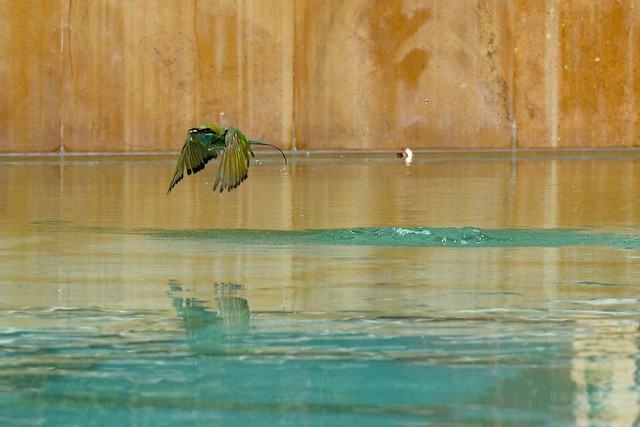
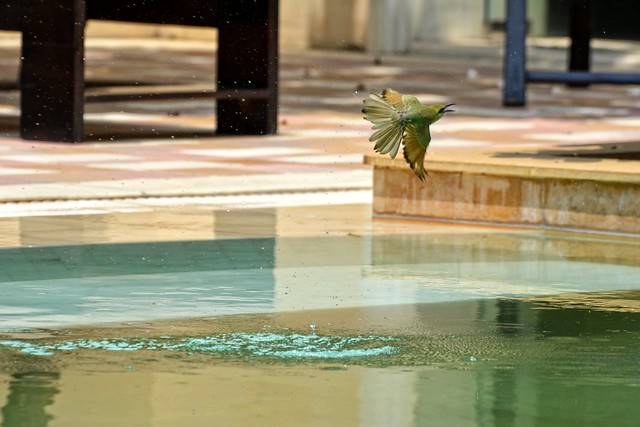 Pretty cool little birds, and fascinating to watch! In between, we took some time to walk around and snap shots of some of the other birds hanging around the pool. For example, the red-vented bulbul below kept appearing around the pool deck chairs and would perch very close without flying away.
Pretty cool little birds, and fascinating to watch! In between, we took some time to walk around and snap shots of some of the other birds hanging around the pool. For example, the red-vented bulbul below kept appearing around the pool deck chairs and would perch very close without flying away. 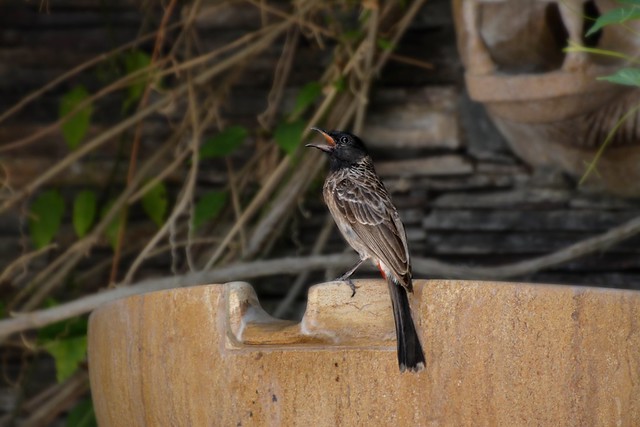
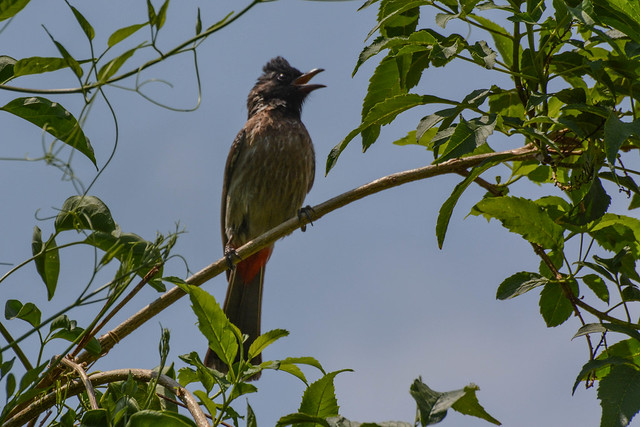 I finally figured out why he – actually probably she – was hanging around when she disappeared into the vegetation that grew over the trellis and provided shade for the deck chairs:
I finally figured out why he – actually probably she – was hanging around when she disappeared into the vegetation that grew over the trellis and provided shade for the deck chairs: 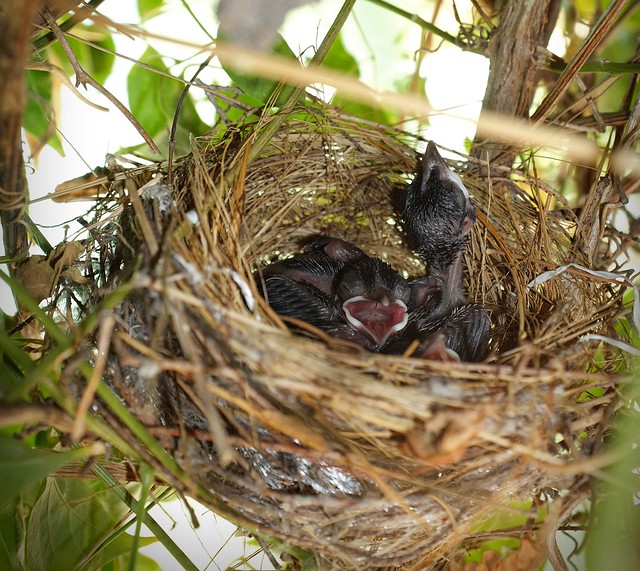
Eventually it was time to head back, pack up and prepare for our ride to the airport. Before we left, I also got shots of these unidentified birds. Maybe you can help identify them!

